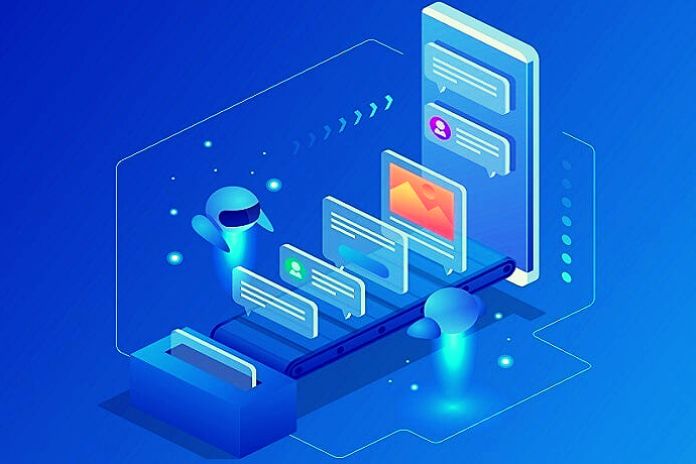Machine Learning and IT: It is the science of making computers learn and act like humans, optimizing learning autonomously and feeding them data and information through interactions with the real world.
A more basic definition is the use of algorithms to perform data analysis, learn from it and make predictions about the future.
In other words, it is an application that allows systems to evolve automatically based on experience without necessarily being programmed for that.
This autonomous learning happens through a program that can access multiple databases and use them to acquire knowledge for themselves.
The machine learning process starts with observations and data analysis, such as examples, direct experience, or instruction, to look for patterns and make better decisions in the future, considering the cited examples. The main objective is to generate stimuli for computers to learn automatically without assistance or any other human intervention.
Machine Learning And Artificial Intelligence (AI)
Misperception can lead to confusion, but Artificial Intelligence and Machine Learning are different, despite being interdependent concepts. Both terms come up very frequently when we talk about technological changes, such as digital transformation and Big Data Analytics. However, there are differences.
While Artificial Intelligence represents the idea that machines can perform tasks in a way that we consider “intelligent,” Machine Learning is just one of the applications of AI.
To simplify even further, think of AI as the broader goal of autonomous machine intelligence and machine learning as the scientific methods used to make this possible. In this way, Machine Learning is what makes Artificial Intelligence possible.
How Can Machine Learning Be Observed In Practice?
There are many examples, but to keep the text manageable, we will focus on the simplest ones so that you have a good idea. Check out!
On Transport Apps
Do you know the Uber or 99Pop application that you use to move from one place to another practically and economically? How do they price the trip, minimize post-call wait times, and optimally match other passengers traveling to the same destination? The answer is: using Machine Learning.
By crossing data in real-time, the applications create intelligent routes in which every trip involves at least one passenger, generating optimization of services, savings, and greater profitability for those who work.
In Online Shopping
Machine Learning algorithms are also behind some of your favorite websites. Companies like Amazon and other Brazilian companies use this technology to offer highly personalized service.
For example, based on your Google searches, the site tells you exactly what you were looking for if it’s available for sale. In addition, Machine Learning allows online stores to offer personalized recommendations based on your previous purchases and interactions within the site itself.
On The Social Networks
Facebook, Google+, Twitter, and many other social networks use Machine Learning to refer friends. Through data analysis and cross-referencing profile information, the system discovers people who studied at the same educational institution or worked at the same company as you in close times, indicating them as strong candidates to be known.
In Traffic
Using geolocation data present in smartphones, Google Maps can analyze the speed of movement of traffic in real-time. In this way, applications such as Waze take advantage of technology and incorporate records of slowdowns, accidents, and other occurrences reported by users into their services.
All this information is analyzed in real-time by the Machine Learning algorithm, which indicates the best routes for each user at any moment.
How Does Machine Learning Impact The IT And Business Sectors Of Companies?
The first significant impact will be the complete automation of operations. Machines will now perform activities that are still carried out manually. In addition, systems will learn how to control themselves and carry out their updates and maintenance, making processes increasingly efficient.
Communication with customers should also be heavily impacted. In 2018 and beyond, chatbots will play a key role in online customer service. They can analyze customer messages and guide them alone to solve problems.
Many Machine Learning applications already scan user profiles on social networks to provide companies with what they want or need, as well as how and when. This helps in designing marketing campaigns with high return power.
What To Expect From The Future With Machine Learning?
It makes Artificial Intelligence no longer just a fantasy of science fiction writers, becoming a natural and essential technology for everyday life, especially in business.
With cloud computing offering unprecedented scalability and availability, we are finally reaching a point where machine learning can go further and drive innovation across all industries.
Soon, there will be online command platforms where Machine Learning applications will be hosted and give life to equipment and systems miles away, as long as they are all connected to the network. Companies that pay attention to this evolution will emerge ahead, becoming pioneers, and, with that, will add a substantial competitive advantage over competitors in the segment.
As we have seen, Machine Learning allows the analysis of large volumes of data, identifies patterns, and points out trends, risks, and opportunities, shaping its behavior according to changing conditions in the environment in which it operates. This can be quite an advantage for the business.

